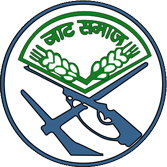
Already Have An Account?
Login
The Jat Community (also spelled Jatt and Jaat) are a traditionally agricultural community in Northern India and Pakistan. they now live mostly in the Indian states of Haryana, Punjab, Delhi, Rajasthan and Uttar Pradesh and the Pakistani provinces of Punjab and Sindh.
The Hindu varna system is unclear on Jat status within the caste system. Some sources state that Jats are regarded as Kshatriyas or "degraded Kshatriyas" who, as they did not observe Brahmanic rites and rituals, had fallen to the status of Shudra. Uma Chakravarti reports that the varna status of the Jats improved over time, with the Jats starting in the untouchable/chandala varna during the eighth century, changing to shudra status by the 11th century, and with some Jats striving for zamindar status after the Jat rebellion of the 17th century.
The Rajputs refused to accept Jat claims to kshatriya status during the later years of the British Raj and this disagreement frequently resulted in violent incidents between the two communities. The claim at that time of kshatriya status was being made by the Arya Samaj, which was popular in the Jat community. The Arya Samaj saw it as a means to counter the colonial belief that the Jats were not of Aryan descent but of Indo-Scythian origin.
The Jat people are subdivided into numerous clans, some of which overlap with other groups.
Jat Traditionally involved in peasantry, the Jat community saw radical social changes in the 17th century, when the Hindu Jats took up arms against the Mughal Empire during the late 17th and early 18th century. The Hindu Jat kingdom reached its zenith under Maharaja Suraj Mal of Bharatpur (1707–1763).[8] The Jat community of the Punjab region played an important role in the development of the martial Khalsa Panth of Sikhism; they are more commonly known as the Jat Sikhs. By the 20th century, the landowning Jats became an influential group in several parts of North India, including Haryana, Punjab, Western Uttar Pradesh, Rajasthan, and Delhi. Over the years, several Jats abandoned agriculture in favour of urban jobs, and used their dominant economic and political status to claim higher social status.
Jats are classified as Other Backward Class (OBC) in seven of India's thirty-six States and UTs, namely Rajasthan, Himachal Pradesh, Delhi, Uttarakhand, Uttar Pradesh, Madhya Pradesh and Chhattisgarh. However, only the Jats of Rajasthan - excluding those of Bharatpur district and Dholpur district - are entitled to reservation of central government jobs under the OBC reservation. In 2016, the Jats of Haryana organized massive protests demanding to be classified as OBC in order to obtain such affirmative action benefits.
Choudhary:
Meaning:
Choudhary in Sanskrit means head of a community or caste. In Sanskrit, this word can also be
broken down as ‘chadhur’ means ‘four-a measurement of land’ and ‘dhar’ means ‘to posses’.
This gives another meaning to Choudhary i.e. ‘holder of four’.
Traditionally, this name is given as a title to indicate ownership of land. However, now it is used
as a surname.
History:
The earliest reference of the title Choudhary is from the 15th century, when the Sultans of Delhi
gave this title to their military nobles who were of Indian origin.
During the Mugal period, a taluqa consisted of 84 villages and a central town. There was a
Taluqdar who was responsible to collect taxes, maintain law and order for these taluqas. These
taluqdars were entitled to keep 10% of the taxes that were collected. However, some of the
taluqdars with higher positions were entitled to keep up to 1/4th of the taxes that were collected.
These taluqdars were called as Choudhary or ‘the owner of the fourth part’.
In Punjab, during the Sikh rule, Maharaja Ranjit Singh gave the title Choudhary to a few village
headmen. This is when the usage of the title Choudhary became more common.
Religion:
Choudhary are mostly Hindu. But a few have converted into Christianity.
Choudhary worship many deities. Few of the common deities are as below:
Ahindo-Dev - the god of the hills
Himaria-Dev - the protector of field and crops
Morkhi Mata - god who look after the health of both human beings and cattle
Choudhary believe in evil spirits. Mukri Mata, Kiliodio are the ones they believe are responsible
for plague, fever, cholera etc.
Family:
Choudhary marry mostly within the groups of Paragadia, Naladri and Valvda.
After marriage, the female refrain from direct conversation with other males in the family and
also wear a veil in their presence. The ancestral property is divided to all the sons, however, the
eldest son is considered as the successor. Women do not have any rights to the property.
Today, Choudhary is mostly used as a surname, however, in certain parts of India and Pakistani
Punjab, a Choudhary is still considered as a head of the tribe.
Copyright 2016 © Harsh Technology. All right Reserved.